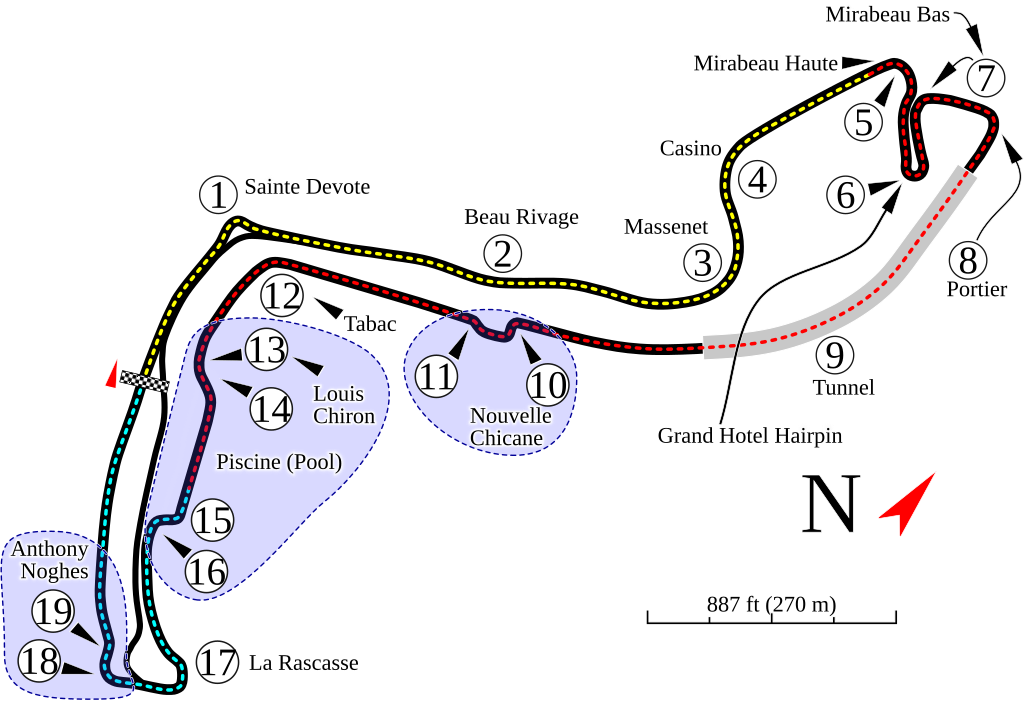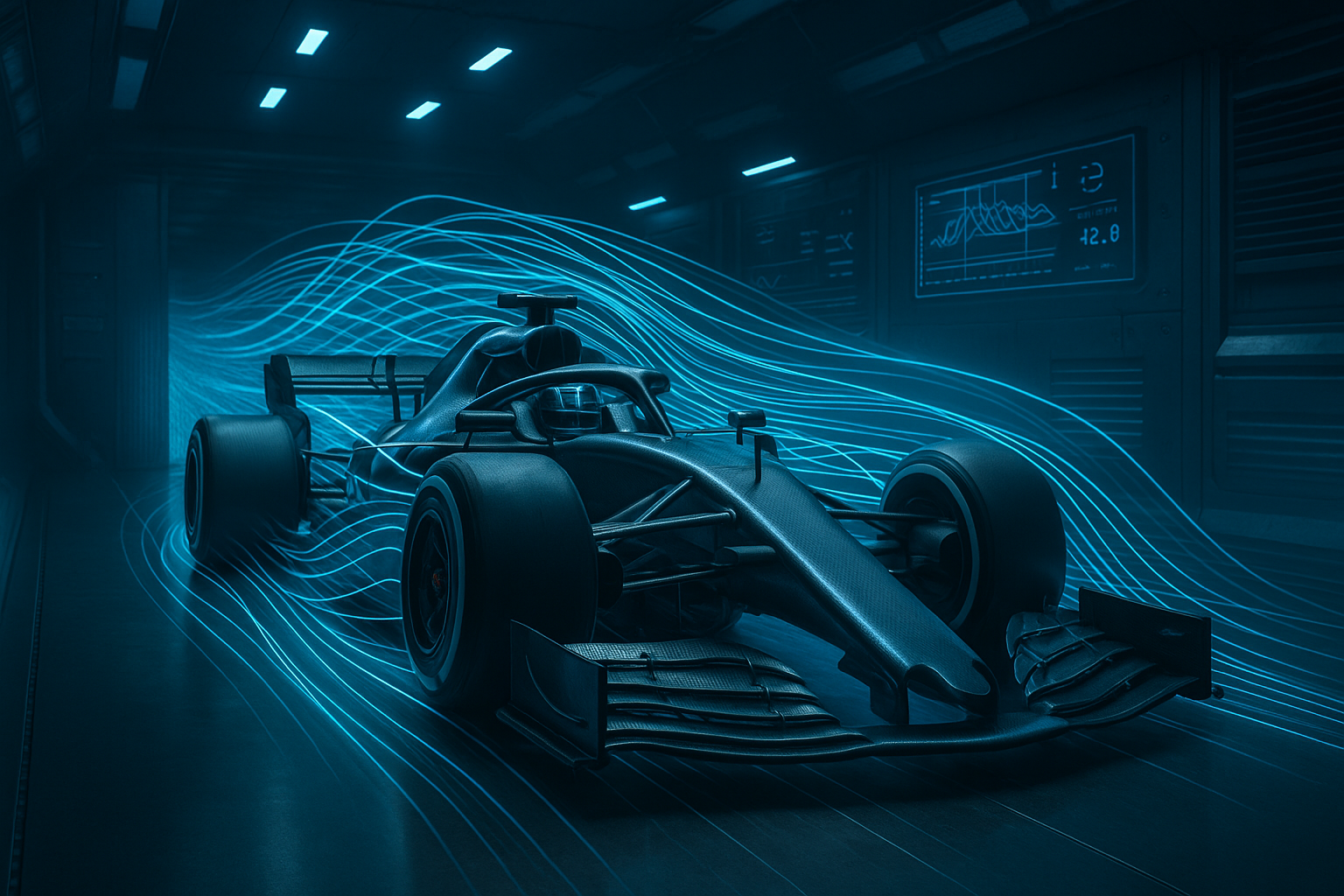The Legacy of the Iconic Street Circuit
Table of Contents
- Introduction: The Prestige of Monaco
- Why the Monaco Circuit is Unique
- A Historic Overview
- Track Layout and Key Challenges
- Safety and Track Evolution
- The Weather Factor & Race Strategy
- Cultural & Economic Impact of Monaco GP
- Conclusion: Why Monaco Remains Motorsport’s Crown Jewel
- Key Takeaways
Introduction
The Monaco Grand Prix is not just a race — it’s a celebration of motorsport’s most iconic traditions, set against the opulence of the Côte d’Azur. Since its first edition in 1929, this legendary 3.337 km circuit winding through the streets of Monte Carlo has come to define the ultimate test of precision driving, courage, and concentration.
With barriers inches away, zero room for error, and a layout that defies modern F1 car dimensions, Monaco turns every lap into a performance — where the driver becomes the star and the machine, merely the instrument.
What Makes Monaco So Special?
✔️ Unmatched Glamour – From megayachts in the harbor to A-list celebrities in the paddock, no race rivals the spectacle of Monaco.
✔️ The Purest Driver’s Circuit – No run-off zones, no forgiveness. Winning here demands absolute mastery.
✔️ Historic Prestige – Alongside the Indy 500 and the 24 Hours of Le Mans, Monaco completes the Triple Crown of Motorsport — a feat achieved by only one man: Graham Hill.
✔️ Timeless Challenges – The same corners that tested Ayrton Senna and Alain Prost now challenge Verstappen, Leclerc, and Hamilton.
Whether you’re a lifelong racing fan, a curious newcomer, or simply fascinated by the intersection of speed, danger, and elegance, this guide will take you through everything that makes Monaco a sacred name in Formula 1.
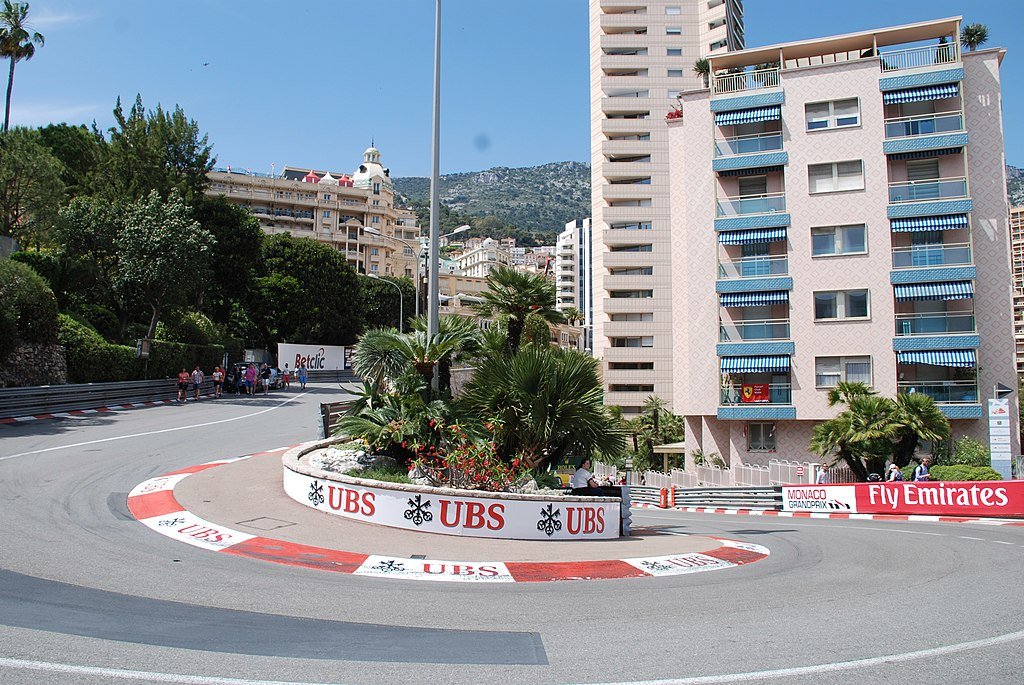
Why the Monaco Circuit is Truly One of a Kind
The Circuit de Monaco is not just a racetrack — it’s a living, breathing part of the city, crafted through the tight and unforgiving streets of Monte Carlo and La Condamine. Its layout remains virtually unchanged since the inaugural Formula 1 World Championship season in 1950, preserving the essence of what makes this event the most technically demanding and mentally exhausting challenge on the calendar.
While modern circuits are designed with run-off areas, generous track widths, and extensive safety zones, Monaco offers none of that forgiveness. Every millimeter counts.
Circuit Profile – Key Facts & Technical Overview
| Feature | Monaco Grand Prix |
|---|---|
| Circuit Name | Circuit de Monaco |
| Location | Monte Carlo, Monaco |
| Length | 3.337 km (2.074 miles) |
| Number of Turns | 19 (11 right, 8 left) |
| First F1 Grand Prix | 1950 (non-championship race held in 1929) |
| Race Distance | 78 laps – total of 260.286 km |
| Pole Position Importance | Extremely High – ~83% win rate from pole in modern era |
| Fastest Lap | 1:12.909 – Lewis Hamilton (2021) |
| Top Speed | ~290 km/h (180 mph) (approaching the Nouvelle Chicane) |
| Average Speed | ~160 km/h – Slowest average of the F1 calendar |
| DRS Zones | 1 (Start/Finish straight – minimally effective) |
| Elevation Change | ~42 meters – Steep climb out of Sainte Dévote |
| Pit Lane Time Loss | ~20-22 seconds – short but risky due to tight exit |
Engineering Precision Over Raw Power
Unlike high-speed tracks like Monza or Spa, where aerodynamic efficiency and engine power dominate, Monaco demands something far more nuanced:
High Downforce Setup: Cars are configured for maximum aerodynamic grip at low speeds. Engineers crank up rear wing angles and optimize suspension geometry for traction on bumpy, low-grip street surfaces.
Softest Tire Compounds: Pirelli often brings its softest range (e.g., C3-C4-C5) to allow heat buildup quickly and provide mechanical grip through the twisty sectors.
Short Wheelbase Advantage: A more compact chassis can rotate better through tight corners like the Fairmont Hairpin — the slowest corner in all of Formula 1 (taken at ~40 km/h).
Steering Lock Calibration: Teams often modify steering racks to achieve the extreme lock needed for corners like Mirabeau and the hairpin.
What Truly Sets Monaco Apart?
Zero Margin for Error
The circuit is flanked by Armco barriers mere centimeters from the racing line. A momentary lapse of concentration — a fraction of oversteer, a late brake — ends in the wall. This leaves no room for driver error or car instability.
Minimal Overtaking Opportunities
Overtaking is so rare that track position becomes almost everything. Qualifying here is often more important than the race itself, and undercuts and pit strategy are the primary tools for position changes.
Slowest, Yet Most Technical
Despite being the slowest race in average speed, Monaco is the most complex in driver input. The sequence from Casino Square to the Swimming Pool section demands over 60 gear changes per lap, ultra-precise throttle modulation, and lightning-fast reflexes — especially with today’s turbo-hybrid torque delivery.
A Circuit That Defies Modern F1
Monaco stands as a paradox: it’s archaic, impractical, and brutally unforgiving in the age of 1,000-horsepower machines — and yet, it’s revered. It is where the driver matters more than the machine. It’s where legends are carved in millimeters.
Even in a world of simulators, DRS zones, and data-driven racing, Monaco remains raw. It’s not about speed — it’s about perfection.
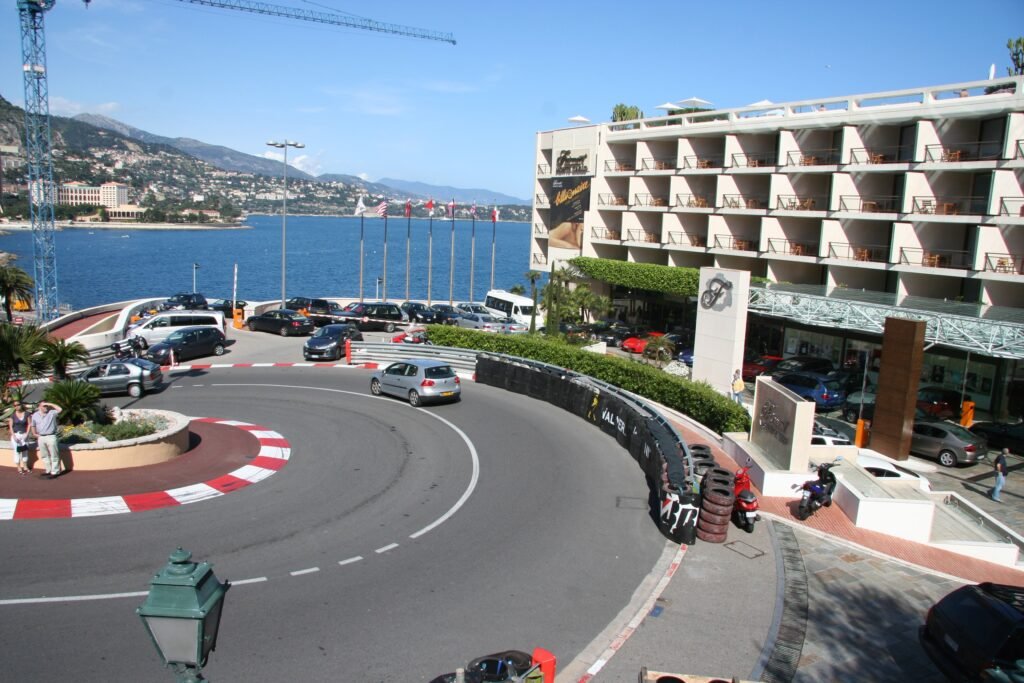
A Historic Overview: The Making of a Legend
The Monaco Grand Prix is not just a race; it’s a chapter-by-chapter chronicle of motorsport’s most prestigious legacy. It was first held in 1929, thanks to the vision of Antony Noghès, a wealthy tobacco magnate and motorsport enthusiast, with support from Prince Louis II of Monaco and the Automobile Club de Monaco. The idea? To place Monaco on the international motorsport map — and it worked.
Held on a layout that winds through Monte Carlo’s luxurious harbor, the narrow streets and sharp elevation changes provided a unique spectacle even in the pre-war era. Since joining the inaugural Formula 1 World Championship calendar in 1950, Monaco has become the most iconic and glamorous event in motorsport.
Milestones & Evolution
1929 – The inaugural race is won by William Grover-Williams in a Bugatti Type 35B, racing in a green car under the pseudonym “Williams.”
1950 – Monaco hosts its first official Formula 1 World Championship round. Juan Manuel Fangio, in his debut F1 season, takes victory in dominant fashion.
1965–1975 – Monaco becomes central to the growing media spectacle of F1, with legendary names like Graham Hill (Mr. Monaco) and Jackie Stewart mastering its intricacies.
1984 – The race sees a legendary wet-weather drive from rookie Ayrton Senna, who was catching leader Alain Prost before the race was controversially red-flagged.
1988–1993 – Ayrton Senna rewrites history, claiming six victories, the most by any driver in Monaco. His 1988 pole lap is still considered one of the greatest in F1 history.
2016 – Lewis Hamilton wins after a strategic masterclass on a drying track, showcasing how modern F1 is as much about brains as it is about brawn.
2021 – Max Verstappen wins for the first time in Monaco, taking a key step toward his first world title.
2024 – Charles Leclerc finally breaks the home curse, becoming the first Monegasque to win his home Grand Prix — a dream decades in the making.
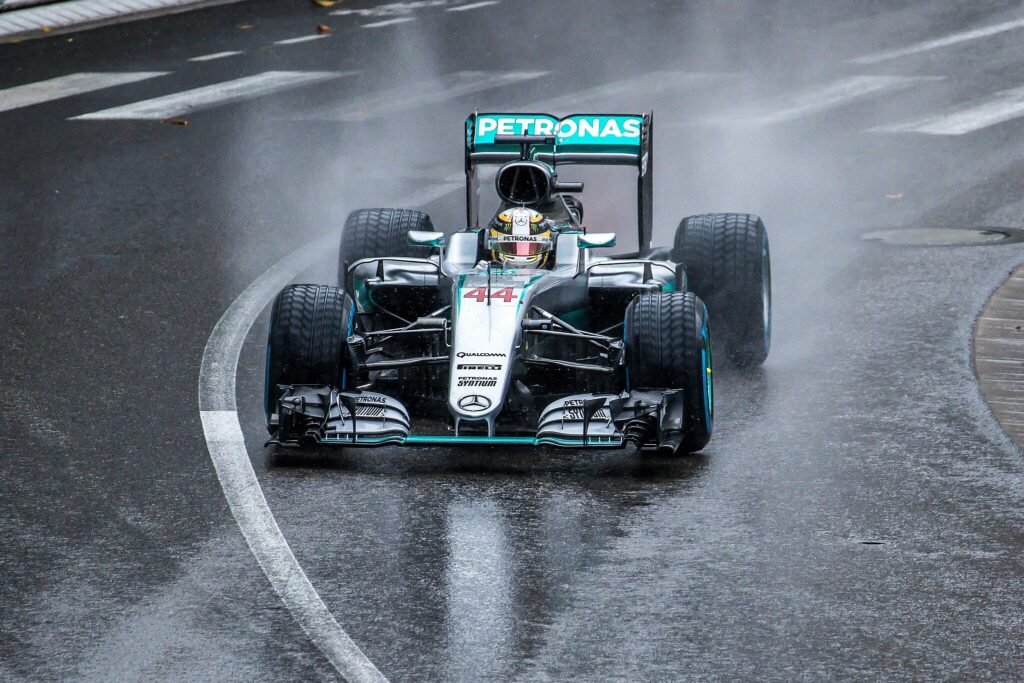
Notable Winners: Icons of the Principality
| Year | Driver | Team / Car | Legacy |
|---|---|---|---|
| 1929 | William Grover-Williams | Bugatti Type 35B | First winner in history |
| 1950 | Juan Manuel Fangio | Alfa Romeo 158 | Victory in Monaco debut; went on to 5 world titles |
| 1963–65 | Graham Hill | BRM | “Mr. Monaco” with 5 wins across the 60s |
| 1988 | Ayrton Senna | McLaren MP4/4 | Start of a 6-win legacy; pole lap widely revered |
| 2006 | Fernando Alonso | Renault R26 | Helped cement his dominance in the mid-2000s |
| 2021 | Max Verstappen | Red Bull Racing | Critical win en route to first world championship |
| 2024 | Charles Leclerc | Ferrari SF-24 | Historic home victory after years of heartbreak |
More Than Just a Race: A Cultural Landmark
The Monaco Grand Prix has hosted royalty, movie stars, business moguls, and racing legends, all drawn to its unique atmosphere. It’s part of the elusive Triple Crown of Motorsport, alongside the Indy 500 and the 24 Hours of Le Mans — a feat only achieved by Graham Hill.
But beyond the champagne and celebrity, Monaco is a driver’s battleground, where history is made not by the fastest car, but by the bravest and most precise hands on the wheel.
Track Layout and Key Challenges: Mastering Monaco Corner by Corner
The Circuit de Monaco is a relentless test of reflexes, rhythm, and raw courage. With 78 laps through tight city streets, it’s a circuit where mistakes aren’t corrected — they’re punished. Below, we break down the key sectors and explain why Monaco separates the great from the merely good.
Key Corners & Signature Features
| Section | Description |
|---|---|
| 1. Sainte-Dévote (Turn 1) | The race’s first braking point. Entry from ~280 km/h into a tight right-hander. Easy to lock up or get squeezed into the wall. Frequent site of first-lap chaos. Gear: 2nd. Speed: ~90-100 km/h. |
| 2. Beau Rivage to Massenet | Uphill flat-out acceleration zone. Slight right-hand kink at ~260–280 km/h. The car dances over bumps and camber. Drivers must keep it clean for positioning into Casino. |
| 3. Casino Square (Turn 4) | High-speed, off-camber left with limited visibility. One of the most glamorous and technical spots. Elevation makes grip unpredictable. Gear: 4th. |
| 4. Mirabeau Haute & Fairmont Hairpin | Two completely different challenges: Mirabeau is a sharp downhill right with tricky traction. Hairpin is the slowest corner in F1 (~40-48 km/h), needing maximum steering lock and throttle finesse. Gear: 1st. |
| 5. Portier (Turn 8) | Vital for exit speed into the tunnel. Ayrton Senna crashed here while leading in 1988. Grip is low, runoff is zero. |
| 6. Tunnel | Monaco’s fastest section, taken flat at ~290 km/h. Lighting transition from shadow to sunlight makes braking for the Nouvelle Chicane extremely difficult. Also where downforce is at its weakest. |
| 7. Nouvelle Chicane (Turn 10–11) | Hard braking from top speed. Easy to lock up and overshoot. Exit is crucial to avoid losing momentum. Gear: 2nd. Speed: ~100 km/h. |
| 8. Tabac (Turn 12) | Ultra-fast left with only a few centimeters between the car and the wall. Taken at ~190 km/h in 6th gear. Requires bravery and total commitment. |
| 9. Swimming Pool Chicane (Turn 13–16) | One of the most visually impressive corners in F1. Fast direction change, minimal margin for error. Suspension load is extreme. Gear: 4th. Speed: ~160–190 km/h. |
| 10. Rascasse (Turn 17) | Tight right-hander leading into pit entry. Perfect place for a lunge — or a traffic jam. Location of multiple red flags in the past. |
| 11. Anthony Noghès (Turn 19) | Final corner, named after the circuit’s founder. Last chance to get traction right and avoid the wall. Exit directly affects speed down the main straight. Gear: 2nd. |
Monaco: A Track Where Perfection Is Measured in Millimeters
Unlike other tracks where drivers can “reset” after mistakes, Monaco offers no forgiveness. A missed apex doesn’t mean a slower time — it often means a broken suspension.
Key driving challenges include:
Throttle modulation in low-grip zones like Portier and the Hairpin.
Steering precision with custom rack geometry.
Brake bias adjustment lap-by-lap to handle the varying surface grip.
Fatigue and mental load — especially during qualifying, which is arguably the most important of the season.
Did You Know?
🏆 Ayrton Senna’s six Monaco victories (1987, 1989–1993) remain unbeaten — and his 1988 qualifying lap is widely hailed as the most perfect lap ever driven in F1.
🛞 The steering rack used at Monaco is often unique to the event, engineered to allow an extreme turning radius for the Fairmont Hairpin.
📐 At full lock in the Hairpin, some cars barely make the turn without the inside front tire skipping or locking up — which is still faster than a wider angle.
“Driving at Monaco is like riding a bicycle around your living room.”
– Nelson Piquet, three-time F1 World Champion
Safety and Track Evolution: Taming a Dangerous Icon
Despite its elegance and charm, the Circuit de Monaco has always been one of the most dangerous circuits in motorsport. With virtually no runoff areas, narrow lanes, and armco barriers hugging every inch of asphalt, Monaco pushes drivers — and their machines — to the limit of control.
What makes Monaco truly unique is that, unlike purpose-built racetracks designed with safety in mind, the circuit winds through public city streets, bordered by buildings, sidewalks, and elevation changes that leave no room for escape.
Yet, over the decades, the evolution of safety at Monaco has transformed it from a high-risk gauntlet to a modern racing venue that still retains its original DNA.
Key Safety Enhancements Over the Years
| Year / Era | Improvement |
|---|---|
| 1960s–1970s | Introduction of Armco Barriers – Replacing hay bales and curbs, metal guardrails became standard. |
| 1986 | First Major Pit Lane Redesign – The paddock area was restructured to reduce traffic flow risks. |
| 1994–1996 | Barrier Upgrades Post-Senna Era – Introduction of higher-impact energy absorption systems. |
| 2003 | Modified Swimming Pool Section – Redesigned for improved safety and slightly wider runoff zone. |
| 2015–2017 | TecPro Barriers Introduced – Modern impact-dissipating barriers used in high-risk areas. |
| 2015–Present | Virtual Safety Car (VSC) & Advanced Marshaling Tech – Faster incident control and driver alerts. |
| 2021 | Pit Lane Speed Limit Refinements – Aligned with FIA standards for narrower pit exit. |
Today, the FIA works closely with Monaco’s local government and the Automobile Club de Monaco to ensure that every inch of the circuit meets evolving safety standards — all without altering its historical essence.
Infamous Crashes That Shaped Safety in Monaco
Alberto Ascari – 1955
In one of the most surreal accidents in F1 history, Ascari crashed at the chicane and flew straight into the Monaco harbor. He swam to safety but died tragically just days later while testing at Monza. The incident led to improved barriers and revisions in escape routes.
Lorenzo Bandini – 1967
Bandini’s fiery crash at the harbor chicane remains one of Monaco’s darkest moments. Trapped in his Ferrari, he succumbed to burns days later. This event triggered a major shift in F1 safety philosophy, accelerating discussions around fire protection, marshaling, and driver rescue protocols.
Sergio Pérez – 2011
A violent crash in qualifying at the exit of the tunnel into the Nouvelle Chicane left Pérez with a concussion and bruises. It prompted the addition of TecPro barriers and reprofiling of that section to soften the braking zone.
Modern Tools in a Historic Circuit
TecPro barriers now protect many of the most dangerous zones, such as Tabac and the Swimming Pool exit.
Virtual Safety Car and digital flag panels ensure instant communication with drivers.
Medical Car positioning and improved track access for ambulances and cranes have also been carefully optimized in the last two decades.
Monaco hasn’t changed to become safe. Safety tech evolved to respect Monaco’s limits.
In an era where most tracks are built for safety first, Monaco remains a symbol of how technology must adapt to tradition, not the other way around. It’s a delicate balance — and a brilliant one.
The Weather Factor & Race Strategy: When Precision Meets Uncertainty
While Monaco is already a battlefield of millimetric precision, its coastal Mediterranean location adds an unpredictable wildcard: the weather. Sudden showers can turn the principality’s narrow streets into a slippery, chaotic maze, where even the best lose control — and the bravest can win big.
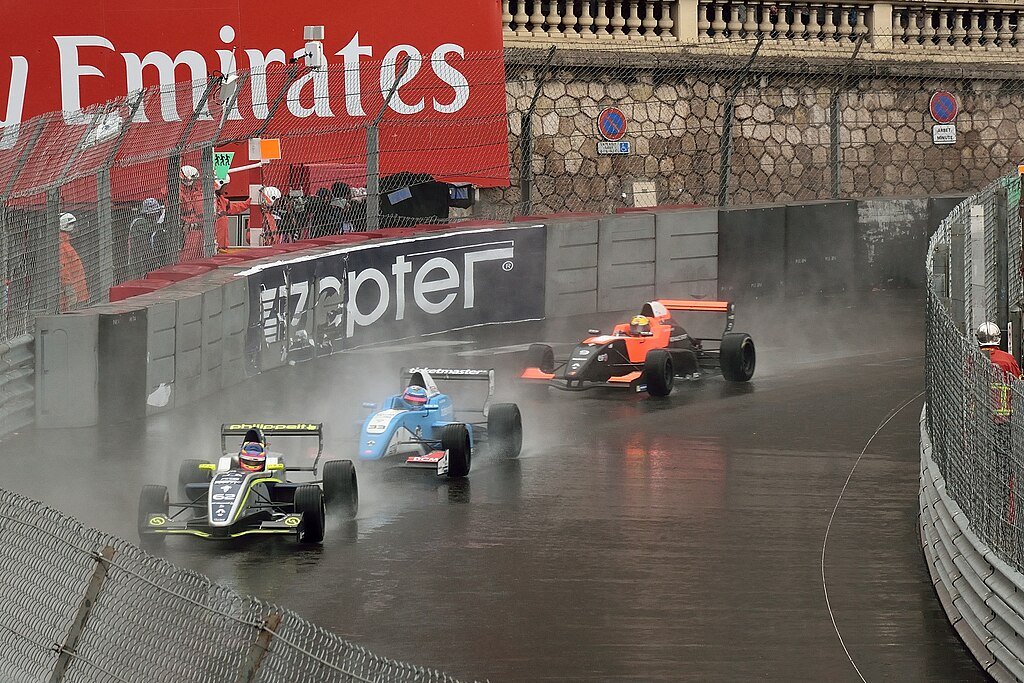
When It Rains in Monaco…
Rain in Monaco isn’t just inconvenient — it’s transformative. The track, already tight and low on grip, becomes a slippery canyon of carbon fiber and chaos, where overtaking is not just difficult — it’s dangerous.
Key Impacts of Rain:
Zero Overtaking Possibilities: In dry conditions overtaking is rare; in wet, it’s virtually nonexistent.
Slick Tires Are Worthless: Monaco’s wet surface doesn’t dry quickly due to the tall buildings and narrow streets. Drivers stuck on slicks during light rain risk catastrophic crashes.
Driver Skill > Car Performance: Rain neutralizes performance gaps and rewards those with finesse and intuition.
Case Study – 2016: The Masterclass of Lewis Hamilton
Started 3rd on the grid.
The race began under wet conditions behind a safety car.
While others switched early to intermediates, Hamilton stayed out on wets, timing his change directly to slicks.
Result? Race victory due to tire strategy, patience, and perfect judgment.
Strategic Realities of the Monaco Grand Prix
Due to the circuit’s unique characteristics, strategy becomes the ultimate weapon. Teams plan and simulate hundreds of scenarios in advance, knowing that a single miscalculation in timing, traffic, or tire wear can cost the race.
Key Strategic Elements:
| Tactic | Explanation |
|---|---|
| Pole Position is King | Over 75% of Monaco winners since 2000 have started from P1. In some years, pole practically guarantees victory. |
| Undercut Advantage | Pitting earlier to gain clear air often pays off. Timing it just before hitting traffic is crucial. |
| Overcut Potential | On rare occasions, staying out longer works — if the in-lap of a rival is compromised by traffic. |
| Tire Management | The surface is low on wear — drivers can complete the race on one set of tires, making pit windows narrow. |
| Safety Car Readiness | Monaco has one of the highest Safety Car probabilities. Teams must be ready to adapt instantly. |
| Track Position > Fresh Tires | Fresh rubber matters less here; even significantly faster cars can’t pass a well-defending rival. |
Common Pit Strategy Approaches
| Strategy Type | Description |
|---|---|
| One-Stop Soft–Hard | Start on softs, extend, then switch to hards around Lap 20–30. Classic and conservative. |
| Undercut on Mediums | Start on mediums, pit early for hards or softs to leapfrog rivals stuck in traffic. |
| Wet-to-Slick Gamble | Stay longer on wets until track fully dries to skip intermediates — extremely risky but rewarding (e.g. Hamilton 2016). |
What Makes Strategy So Difficult in Monaco?
Pit lane is tight and often congested — errors can cost more than elsewhere.
Traffic is everywhere. Emerging behind a slower car means your strategy is instantly compromised.
Overcut and undercut margins are razor-thin — a difference of 1-2 seconds can decide the race.
“In Monaco, qualifying gets you the trophy. Sunday just confirms it.”
— Common paddock saying
Cultural & Economic Impact of the Monaco Grand Prix
The Monaco Grand Prix is more than just the crown jewel of Formula 1 — it’s an annual celebration of luxury, legacy, and global attention. For one weekend in May, the tiny principality becomes the epicenter of world-class motorsport, celebrity culture, and elite business networking.
The “Hollywood of Motorsport”
From the paddock to the harbor, Monaco offers a visual spectacle like no other race on the planet.
Luxury Yachts line the marina, transforming Port Hercules into a floating city of private parties and exclusive watch parties.
Celebrities and Superstars arrive en masse — from Hollywood royalty like Leonardo DiCaprio and Brad Pitt, to sports icons like Tom Brady, David Beckham, and Cristiano Ronaldo.
European Royalty graces the paddock — led by Prince Albert II, whose family has been closely tied to the Grand Prix since its inception.
Top DJs and brands host lavish post-race events at the Casino de Monte-Carlo, Amber Lounge, and rooftop lounges with panoramic views of the track.
“If you’re not at Monaco during GP weekend, are you even in Formula 1?” – A saying that echoes through the paddock.
Economic Powerhouse in a City-State
Though Monaco spans only 2 square kilometers, the economic boom generated by race weekend is monumental.
| Economic Indicator | Impact |
|---|---|
| Total Revenue (Est.) | Over $110 million USD in direct and indirect revenue |
| Hotel Occupancy Rate | Approaches 100%, even with price surges |
| Luxury Room Prices | Standard 5-star suites can exceed $3,000–$5,000 per night |
| F&B and Hospitality Spend | VIP guests alone contribute millions to high-end restaurants and bars |
| Temporary Job Creation | Boost to local economy through event staffing, security, and logistics |
| Media Rights & Exposure | Global audience of 100M+ viewers brings long-term tourism benefit |
The Monaco GP is one of the principality’s largest revenue drivers, especially in a state where traditional taxes on residents are nearly nonexistent.
Why Monaco Will Always Be Special
Monaco is often criticized by purists and engineers for being “outdated” — narrow, slow, and nearly impossible to overtake. And yet, no other circuit commands such reverence.
Because:
It’s part of motorsport’s DNA — one-third of the elusive Triple Crown (with Indy 500 and Le Mans).
It challenges drivers mentally and physically like no other venue.
It captures the imagination of fans and media in a way no modern Tilke-designed track ever could.
Even in an era of hyper-technical circuits and state-of-the-art facilities, Monaco remains untouched, unreplicable, and unforgettable.
“To win in Monaco is to etch your name into racing immortality. To drive there is to understand why F1 is more than just a sport — it’s a spectacle.”
Conclusion: Why Monaco Remains the Crown Jewel of Motorsport
The Monaco Grand Prix is more than a race — it’s a tradition, a proving ground, and a global spectacle. It blends the art of precision driving, the legacy of motorsport history, and the luxury of elite culture in a way no other circuit can replicate.
From the roar through the tunnel to the razor-thin margins of the Swimming Pool chicane, Monaco demands perfection — and rewards greatness.
Key Takeaways
Slowest Race, Highest Skill Ceiling – A masterclass in car control and mental focus.
Zero Margin for Error – One mistake can end a race, or a championship.
A Global Icon – More than sport: Monaco is a cultural event that unites motorsport with elegance.
Legacy is Forged Here – A win in Monaco defines careers. Just ask Senna, Hill, or Leclerc.
What’s your most unforgettable Monaco GP moment?
From Senna’s near-mystical laps to Hamilton’s 2016 tire gamble, drop a comment below and relive the legend.
🔗 Found this guide valuable?
Share it with your racing community and help others discover why Monaco is motorsport’s masterpiece.
Let’s keep the spirit of racing alive — one corner at a time.


